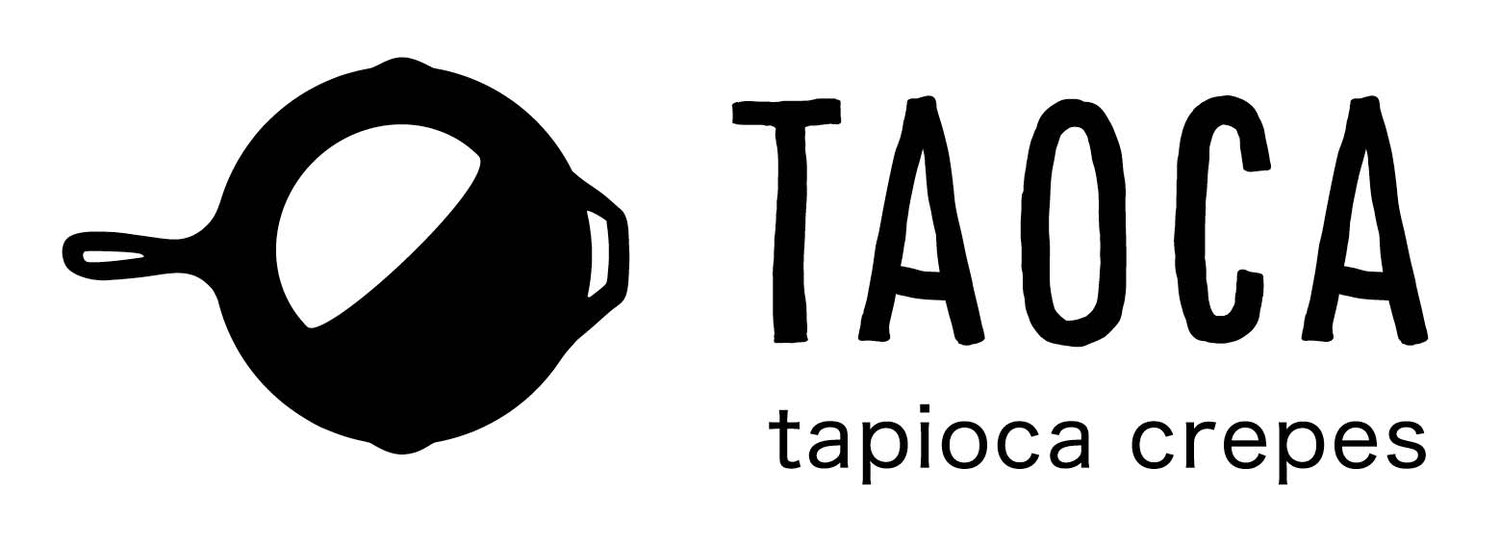DIY Brazilian Tapioca Crepes with TAOCA
TAOCA is bringing the popular Brazilian tapioca crepes to Sydney, and in the video below Chloe Skipp will teach you how to use the TAOCA hydrated tapioca flour to prepare your own crepes at home. For this recipe you'll need: 1/2 cup of tapioca flour, vegan cheese, tomato confit, avocado and basil.
Feel free to use the ingredients that you already have in your fridge to create your favourite combination!
FAQ
What is tapioca crepe?
Brazilian tapioca crepes are a popular street food made with cassava starch, which has been part of the Brazilian Indigenous diet for centuries. Cassava is a root vegetable, and just like potato, tapioca crepes are carb-filled, resulting in a great option for breakfast or pre-workout snack.
Taoca crepes are very versatile and can be cooked with a variety of savoury or sweet fillings.
To make the crepes, cassava starch is moistened with water, then sifted through a fine sieve to produce a snow-like powder. When this is sprinkled onto a hot skillet, it quickly melts together to form a crepe. Yes, that simple!
But, is tapioca crepe healthy, you ask?
What will result on a healthy crepe is your choice of fillings. The crepe itself has calcium, potassium and phosphorus, and is prepared oil free.
Tapioca is naturally gluten free, and a great source of energy. We recommend you add seeds, such as chia seeds, to your crepe in order to lower its glycemic index and enhance satiety for longer. Another hot tip is to alway add greens to your crepes so you can cover some of your daily fibre intake , just like you would add in any healthy sandwich
2. So you’re saying that we don’t need to add water to the mix? But what about butter or oil on the pan?
That’s right! Taoca flour is ready to use, meaning you shouldn’t add any water to the mix, nor butter or oil to the pan.
Simply sift the flour on the skillet and you’ll have a crepe in 2 mins.
It couldn’t be any easier! No need to add water, oil or butter when prepping your crepes. Just remember to have your fillings ready before you sift the flour as its texture is better when fresh.
Pro tip: when the crepe detaches from the pan, turn the fire off, put your fillings on half crepe, fold it and turn the fire on again. Leave it there for 30 sec. on each side just to give it that extra crunchiness - but don’t try and make it golden - Taoca crepes are meant to be white and you don’t want them to burn.
3. How does the flour bind together?
Each packet has just the right amount of water, and when the hydrated tapioca flour is heated, it naturally binds together forming the crepe - just like magic but it’s actually chemistry, thanks to the natural properties of the tapioca starch. Read more below.
We’re good at making tasty crepes, but not so much with chemistry, so we needed to do some research on this one, what we learned:
When native starch granules which are relatively inert are heated in the presence of adequate water, swelling of the granules occur and the amylose dissolves and diffuses out of the swollen granules. The granules aggregate into gel particles, generating a viscous solution. This two-phase structure, called starch paste, is desirable for many food applications where processed starches are used as thickeners or binders.
Font:
Santana AL, Meireles MAA. New starches are the trend for industry applications: A review. Food and Public Health. 2014;4(5):229-241. DOI: 10.5923/j.fph.20140405.04
Santelia D, Zeeman SC. Progress in Arabidopsis starch research and potential biotechnological applications. Current Opinion in Biotechnology. 2011;22(2):271-280
4. Can we prepare the crepe without a sieve?
Yes, you can! The way we suggest doing, sifting the flour directly over the skillet, results on a thinner and more even crepe, just like as we sell them on the markets. However, you can use a spoon to spread the flour if you don’t have a sieve. Your crepe ends up being a little thicker than ours, but in the end it’s all about personal taste
Fun fact: different parts of Brazil eat different styles of tapioca crepe - some prefer it light and thin, some prefer it thick and chewy. We like it when it’s thin and a bit crispy on the outside, and if you follow the steps of our how-to video (check our website) you’ll end up making crepes as beautiful and thin as ours!
5. What fillings do you recommend we put inside?
Taoca crepes are extremely versatile. We have a number of recipes on our website, but if you’re after something easy and quick, here are some of our faves:
- Hummus, mushrooms, rocket, olives
- Avocado, cheese, tomato, basil
- Guacamole, beans, cheese, tomato
- Hazelnut choc spread and strawberry
- Banana, peanut butter, shredded coconut
6. How do you achieve those beautiful colours?
White is the natural colour of the flour, but what about those vibrant colours? Well, it’s all natural, we achieve those colours by hydrating the starch with:
Pink: fresh beetroot juice
Green: fresh spinach juice
Orange: smoked paprika and water
Unfortunately, we do not sell the coloured tapioca flour in packets, as the colours quickly fade if not stored in the fridge. So sad... we know! If you want to try the coloured Taocas you'll have to come and meet us at the markets!
